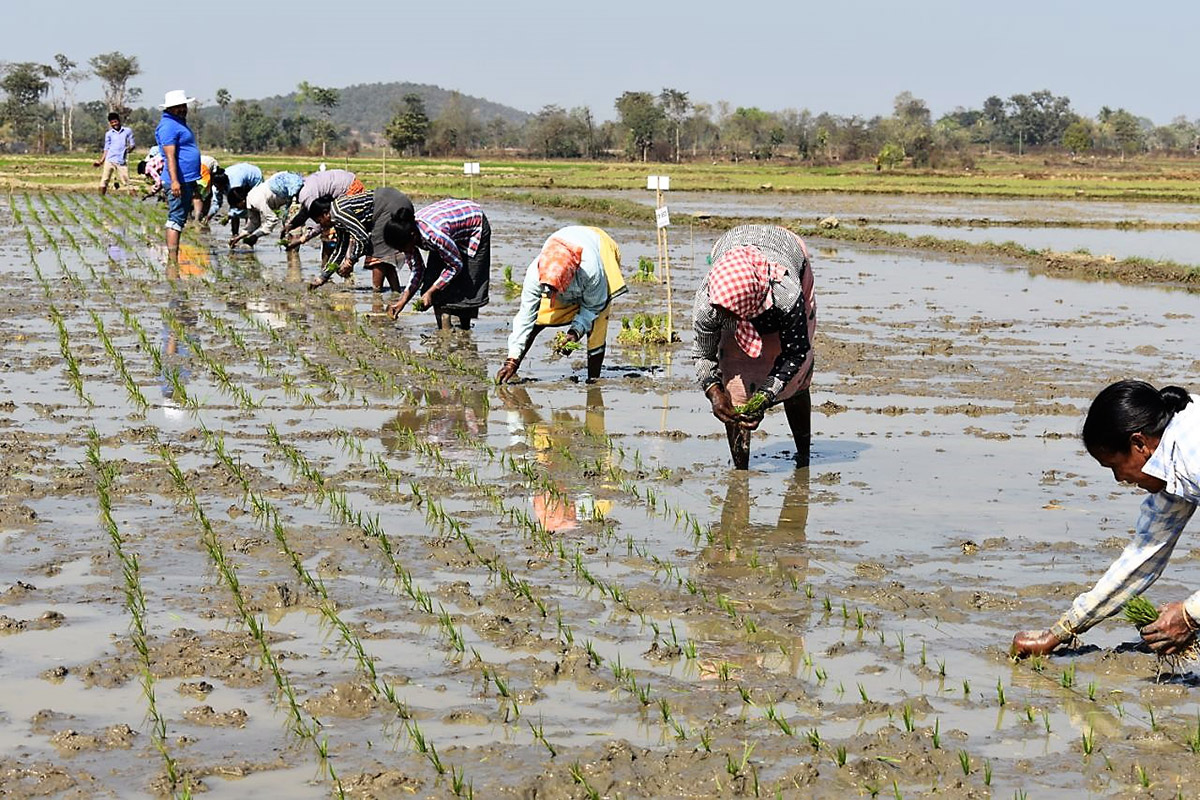How to boost Odisha’s rice harvest?

by Mosharaf Hossain
The importance of rice in the agrarian economy of Odisha is enormous as this major staple is embedded in the diet, economy, culture, and history of the state. Production of the rice determines the food security of the state at a significant scale. Rice alone makes up 24.4% of the total 75800 crores agricultural output in the Odisha--the highest by any single crop and employs more than 50% of the total 17.5 million-workforce. However, the state’s glaring gap in rice productivity is a huge challenge to optimize the economics of rice cultivation. Odisha cuts a dismal figure in terms of rice productivity that stands at only 1.74-ton per hectare compared to the national average (2.57 ton/ha).
Intending to actualize the objective of paddy productivity enhancement and farm income augmentation, the state government has taken several steps in recent times. However, certain critical areas warrant a strategic focus.
First, the rice area in Odisha is chronically prone to many abiotic stresses---submergence, drought, and salinity of varying degrees. These weather-shocks damage crops almost every year. Of the total 3.7 million hectares’ rice area, 1.15 million ha (31%) suffers a setback of the flood while 1.25 million ha (34%) witness the intermittent occurrence of drought. Besides, the problem of salinity impedes rice farming in 0.15 million ha, mostly in coastal areas. Interestingly, recent advances in rice research have made remarkable strides to offer farmers climate-resilient varieties. For instance, CR 1009 sub 1, Swarna sub 1, BINA dhan 11 are some of those recently bred varieties. Unlike traditionally grown several varieties these can tolerate inundation for at least two weeks without yield penalty. Likewise, DRR 44, DRR 43, Sahabhagi dhan, CR 201, CR 205 are some field-validated varietal innovation that can considerably safeguard farmers in the event of a drought spell. But insufficient awareness about these varieties and their slow-paced diffusion are leading to the under-utilization of these recent rice research outcomes. The state’s seed system and extension apparatus should revitalize their outreach approach for faster uptake of these potential varieties to better-equip farmers in mitigating these recurrent climatic aberrations.
Second, a rice variety after a stipulated period of ten years should ideally be discouraged for cultivation since genetic purity and resistance to diseases and pests start eroding considerably. But in Odisha, three varieties (Swarna, Pooja, and Vijetha) that rule the rice area is more than 20 years old. Available substitutes (e.g in place of Swarna, Swarna sub 1 recommended) for these varieties should be appropriately explored and disseminated to raise crop productivity. The latest arrivals of high yielding varieties (HYV) suitable in different rice-growing ecologies should be field-assessed and promoted aggressively.
Third, the lack of adequate irrigation facilities is another obstacle to increasing rice productivity. Only 33.7% cultivable area of Odisha is under irrigation compared to 95% or more in agriculturally progressive states like Punjab, Haryana, AP. Rice is a water-guzzling crop that consumes about 4500-liter water to produce a kg. Therefore, ongoing efforts to create or reform several canals and micro-irrigation structures should be fast-tracked to bring more rice area under assured irrigation. The other two emerging eco-friendly ways to avoid excessive use of water are Direct Seeded Rice (DSR) and the adoption of Green Super Rice (GSR) varieties. DSR (unlike transplanting, seeds are sown directly) requires at least 30% less water than the conventional transplanting method, thus allowing farmers to grow the crop in water-scarce areas. GSR—a relatively new invention, where a variety will provide a stable yield with fewer inputs like water, fertilizer, and pesticide. International Rice Research Institute (IRRI) has facilitated notification of two such varieties--BINA dhan 17 and BRRI 69 recently. However, these newly developed varieties should be channelized in a planned manner to the farmers’ field at a faster pace.
Fourth, the quality of seeds alone can boost rice productivity by at least 5-10%. But farmers’ little access to quality seeds due to several limitations in the formal seed system and credibility issues of informally managed seed chain. A recent study by International Rice Research Institute (IRRI) observed that 64% of rice farmers rely upon their farm kept seeds (informal channel) while only 36% of them purchase it from credible market sources (formal channel).
Fifth, farmers in Odisha, grow pulses (mainly green gram and black gram) after harvesting of Kharif rice. However, longer duration of rice doesn’t free up enough time for taking pulse cultivation at many places. The advent of several early-maturity high yielding varieties—both for rice and pulse-- creates opportunities to grow both the crops.
Sixth, Odisha is a place of genetic diversity of rice. There are several traditional rice varieties such as Kalajeera, Machakanta, Haladichuda--with unique qualities including health benefits--are grown in many pockets. However, due to low productivity, farmers show little eagerness to grow these varieties. The commercial viability of this rice can be achieved by positioning them as premium quality rice for better price realization through the development of a well-studied value chain.
Finally, despite many significant breakthroughs in rice research, there still exist gaps in breeding varieties for extremely marginal environments (stagnant flooding for more than 15 days, severe water deficit) and incorporating a better resistance to varieties for pests and diseases. National and international research institutes should collaborate with departments and agriculture universities to deliver on these stated research gaps.
Given the vital contribution of rice to the state’s food security mission and agricultural GDP, all productivity-boosting measures should be strategically explored and implemented.
Mosharaf Hossain, works with International Rice Research Institutes (IRRI), Bhubaneswar.